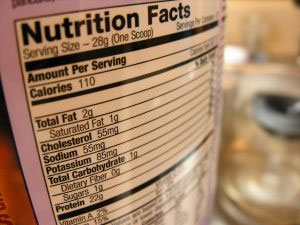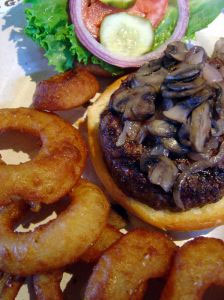Vitamin B-3 and Schizophrenia: Discovery, Recovery, Controversy – by Abram Hoffer, MD
The United States Patent Office delayed issuing a patent on the Wright brothers’ airplane for five years because it broke accepted scientific principles. This is actually true. And so is this: Vitamin B-3, niacin, is scientifically proven to be effective against psychosis, and yet the medical profession has delayed endorsing it. Not for five years, but for fifty. In 1952, Abram Hoffer, PhD, MD, had just completed his psychiatry residency. What’s more, he had proven, with the very first double-blind, placebo-controlled studies in the history of psychiatry, that vitamin B-3 could cure schizophrenia. You would think that psychiatrists everywhere would have beaten down a path to Saskatchewan to replicate the findings of this young Director of Psychiatric Research and his colleague, Humphrey Osmond, MD.
You’d think so.
In modern psychiatry, niacin and schizophrenia are both terms that have been closeted away out of sight. And patients, tranquilized into submission or Prozac-ed into La-La Land, are often idly at home or wandering the streets, where either way it is highly doubtful that they will get much in the way of a daily vitamin intake. Those in institutions fare little better nutritionally. For everyone “knows” that vitamins do not cure “real” diseases.
But Dr Hoffer dissents. For half a century Dr Hoffer has dissented. His central point has been this: Illness, including mental illness, is not caused by drug deficiency. But much illness, especially mental illness, may be seen to be caused by a vitamin deficiency. This makes sense, and has stood up to clinical trial again and again. If you do not believe this, Vitamin B-3 and Schizophrenia will provide you with the references to prove it. And remember that it was Dr. Hoffer who started off those clinical studies in the first place. In 1952.
I personally should have first became aware of a food-brain connection during those all-night, cookie-fired mah-jongg marathons I all-too-regularly indulged in while attending Australian National University. Though arguably somewhat less than psychotic, my mind was nevertheless pretty whacked out on sugar, junk food and adrenalin by 3 am. My mood was destroyed; my mind agitated; unable to sleep, sit still, or smile. Of course, I never entertained even the thought of a nutrition connection. For we’ve all been carefully taught that drugs cure illness, not diet.
And certainly not vitamin supplements!
But the truth will out eventually. Three years later, I first saw niacin work on somebody else. He was a bona-fide, properly-diagnosed, utterly-incurable, State-hospitalized schizophrenic patient. I did not see niacin work in the hospital, of course; the only vitamins given there are what you can filter out of your Jell-O and your Tang. No, the patient was a fellow whose parents were desperate enough try anything, even nutrition. Perhaps this was because their son was so unmanageably violent that he was kicked out of the asylum and sent to live with them. On a good day, his Mom and Dad somehow got him to take 3,000 milligrams of niacin and 10,000 mg of vitamin C. Formally a hyperactive insomniac, he responded by sleeping for 18 hours the first night and becoming surprisingly normal within days. I’d seen him before, and I saw him after. I’d talked to his parents during the whole process. It was an astounding improvement.
Sometime afterward, I tried niacin to see if it would help my own touch of sleeplessness. I found it worked nicely, and it only took a little to do so, perhaps 100 milligrams at most. Any more and I would experience a warm “flush.” But then I found that when I ate junk food or sugar in quantity, I could hold 500 mg or more without flushing a bit. And when I took all that niacin, instead of flipping out, I was calm. In Vitamin B-3 and Schizophrenia , Dr. Hoffer explains why this is so:
1) As a rule, the more ill you are, the more niacin you can hold without flushing. In other words, if you need it, you physiologically soak up a lot of niacin. Where does it all go? Well, a good bit of it goes into making nicotinamide adenine dinucleotide, or NAD. NAD is just about the most important coenzyme in your body. It is made from niacin, as its name implies.
2) Niacin is also works in your body as an antihistamine. Many persons showing psychotic behavior suffer from cerebral allergies. They need more niacin in order to cope with eating inappropriate foods. They also need to stop eating those inappropriate foods, chief among which are the ones they may crave the most: junk food and sugar.
3) There is a chemical found in quantity in the bodies of schizophrenic persons. It is an indole called adrenochrome. Adrenochrome (which is oxidized adrenalin) has an almost LSD-like effect on the body. That might well explain their behavior. Niacin serves to reduce the body’s production of this toxic material.
That Dr. Hoffer can compress a lifetime of research experience into one readable and surprisingly short book is a tribute to how clearly he teaches both layman and physician the essentials of niacin treatment. I have taught nutritional biochemistry to high school, undergraduate, and chiropractic students. To most, it is not an especially gripping subject. But when even a basic working knowledge of niacin chemistry can profoundly change psychotic patients for the better, it becomes very interesting very quickly.
Dr. Hoffer has treated thousands and thousands of such patients for nearly half a century. At 83, he still is in actively practicing orthomolecular (megavitamin) psychiatry. He has seen medical fads come and go. What he sees now is what he’s always seen: that very sick people get well on vitamin B-3.
Review copyright c 2000 by Andrew Saul, 23 Greenridge Crescent, Hamlin, NY 14464 USA.
Vitamin B-3 and Schizophrenia: Discovery, Recovery, Controversy
by Abram Hoffer, MD
Quarry Press, Kingston, Ontario Canada (1998) ISBN 1-55082-079-6
Softcover, 150 pages plus bibliography and two appendices.




